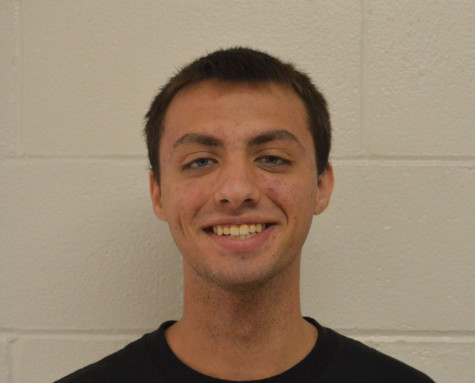Keeping the moment of silence
Photo By Nick Boose
Kristen Becker is a reporter on the Kaneland Krier
March 5, 2015
At the beginning of the day I find myself rushing to my first hour class. I’m almost always late, and come in right after the pledge, during the moment of silence. When I walk in I see kids sitting down, talking, and overall disregarding the act of silence.
Thirty-seconds of students’ morning is set aside by KHS to stand up, and do nothing if we please. Teachers have suggested to use this time, think about our day, ourselves, anything as long as it’s silent. I’m confused as to why there have been major court cases saying that a designated moment of silence violates our Constitutional right, as stated in the First Amendment’s guarantee of freedom of religion.
The establishment clause states Congress may not pass any law that may favor one religion over another.
The Engel v. Vitale case was taken to the Supreme Court in an attempt to prove that having a moment of silence somehow promoted prayer, which in public schools, isn’t legal.
No words are supposed to be said in a moment of silence. Just like the government isn’t physically saying anything to us, we aren’t saying anything during the moment of silence either.
It’s so important to realize this because while the silence is mandatory, we are free to interpret the short amount of time given in whatever way we please. Although it doesn’t seem likely that the government is trying to illegally implement prayer. Everyone is free to ignore it.
According to the American Civil Liberties Union, the law cannot filter private speech. So unless the government is completely disregarding the Constitution, the only thing Congress can restrict is the school promoting or prohibiting religious activities.
Students are allowed a moment of silence during school, and are free to think whatever they want during this time, even pray silently if they please.
The controversy about this is that those who don’t believe in praying think that a moment of silence forces them to practice something they don’t believe in or could eventually lead to required prayer.
The difference between a moment of silence and required prayer is that one is legal and one isn’t. It’s comparing two things that can’t really be compared.
The U.S is supposed to be welcoming of all religions, not prohibiting so strictly that the only way it can be practiced is silently. That’s why the Constitution also has the Free Exercise Clause, which states Congress can’t pass laws that makes it so we can’t practice our religion.
This controversy should serve as lesson that people should respect everyone’s different beliefs,and not view it as an attack against them. I’m free to think in whatever way I please, as is everyone else.
So even though most students at KHS don’t really pay attention to the moment of silence, if they ever choose to, it should be there for them to use, and should definitely not be viewed as a government scheme.





